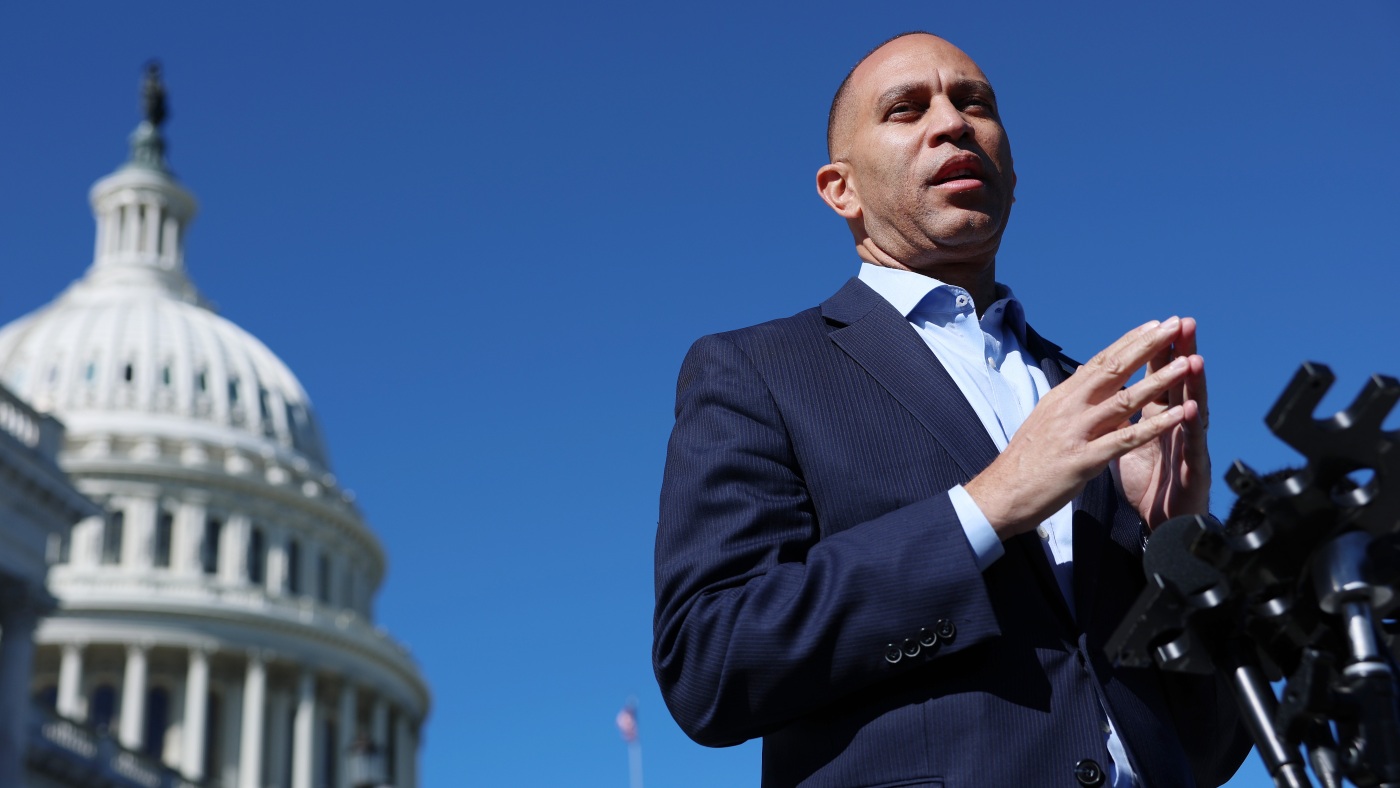
Australia news live: Sydney forecast to have hottest ever October day as Melbourne braces for destructive winds
Follow live
1402 articles found

Follow live

Theoretical physicist who won the Nobel prize for his work on the forces acting on fundamental subatomic particles

New York Jets owner Woody Johnson has outlined modest ambitions for his winless team as he backed his head coach, Aaron Glenn

Join Yara El-Shaboury for goal updates across Europe as the league stage continues

<strong>Minute-by-minute report:</strong> Diego Simeone’s side head over to the Emirates. Join Scott Murray for updates

New York State Police say the man was arrested after they received word from the FBI that that he made "threats to kill a member of Congress."

Shkup, 21 tetor – Nënkryetari i Bashkimit Demokratik për Integrim (BDI) dhe zëdhënësi i Aleancës Kombëtare për Integrim (AKI), Arbër Ademi, në një intervistë për televizionin Alsat, deklaroi se kërkesa për zgjedhje të parakohshme parlamentare nuk ka të bëjë me etjen për pushtet, por me nevojën për të reflektuar vullnetin e qytetarëve në përfaqësimin institucional. “Ne nuk kërkojmë zgjedhje të parakohshme që me çdo kusht BDI apo AKI të jetë në pushtet. Nëse fitues janë ata që aktualisht janë në pushtet, atëherë le të qeverisin, por jo duke u bërë vegla të VMRO-DPMNE-së”, u shpreh Ademi. Ai theksoi se të dhënat zgjedhore tregojnë qartë një epërsi të koalicionit opozitar, dhe se kërkojmë zgjedhje të parakohshme. “Raporti është 20 me 15 në numër deputetësh në favor të AKI-së. Prandaj, kërkojmë zgjedhje të parakohshme”, thekson Ademi. demi gjithashtu theksoi se opozita shqiptare është forcuar ndjeshëm në terren, dhe rezultati i zgjedhjeve lokale është sinjal i qartë se qytetarët po kërkojnë ndryshim politik dhe qeverisës.
Pacific harbor seals — the playful, whiskered charmers found along the West Coast from southern Alaska to Baja California — are vanishing at an alarming rate from their southernmost range, new research shows. A study found a 61.2% population decline on the Baja California Peninsula over a six-year period, with researchers recording a drop from 7,380 individuals in 2016 to 2,863 by 2022. The study was led by the Center for Scientific Research and Higher Education of Ensenada (CICESE), a public research institute in Baja California founded by the federal government in 1973. The Autonomous University of Baja California (UABC) and the University of the Americas Puebla (UDLAP) also contributed. “This is a decline by colony as well as across the entire area,” said María Guadalupe Ruiz Mar, a doctoral student at CICESE. She noted that colonies have collapsed from 44 in 2009 to just four sites this year, as revealed by aerial surveys conducted from April to June. The species, though not listed as endangered, currently has special protection under Mexican official standard NOM-059, which is currently under review. “It would be a good time to reconsider their conservation status,” said Gisela Heckel Dziendzielewski, a CICESE researcher and director of the study. “Their disappearance is a clear sign that the marine and terrestrial ecosystem is under pressure. Protecting their habitat also means protecting the health of the ocean.” “If food availability is low, seals don’t have the energy reserves necessary to increase the number of pups,” Ruiz Mar added. “If the female isn’t well-fed and doesn’t have enough fat reserves, she won’t carry a pregnancy to term or be able to breastfeed successfully.” Affectionately known as “sea puppies” for their dog-like eyes and playfulness, the Pacific harbor seal (Phoca vitulina richardii) inhabits nine islands and archipelagos off the Baja Peninsula and parts of the coast. They are not to be confused with the much larger elephant seal, and specifically one named Panchito — a rugged individualist who once again in 2025 traveled thousands of kilometers from his chilly home waters in the Southern Hemisphere to “summer” in Baja California. Pacific harbor seals prefer nearshore coastal environments, especially subtidal and intertidal zones, bays, and estuaries. They frequently hang out on rocky shores, mudflats, sandbars and occasionally glacial ice for rest, molting and pupping. “Seals are very sensitive to disturbance,” Ruiz Mar said. “We believe the presence of people and vehicles during [rock quarrying] causes them to persistently flee into the water and abandon the sites where they rest and breed.” With reports from La Jornada and El Imparcial

Enjoy some live updates of UEFA Champions League matches such as Arsenal vs. Atlético Madrid, Bayer Leverkusen vs. Paris Saint-Germain and Villarreal vs. Manch...

If you saw a house being transported by barge in West Vancouver waters over the weekend, it wasn’t a dream. Crowds flocked to see a 113-year-old Vancouver heritage house shipped to its new home at 4777 Pilot House Road in West Van’s Caulfeild Cove neighbourhood Sunday afternoon (Oct. 19). “People seemed pretty pleased. Who wouldn’t want to see a lot of heavy machinery bring an old house up a hill? It was just an enormous barge, it practically filled the whole cove,” Susan Walker, owner of the heritage home, told the North Shore News the day after the move. Workers from Nickel Bros, a company that specializes in residential house moves, loaded up the house on the special barge, tugging it down the Fraser River across Burrard Inlet to make it to the final destination. Dozens of people gathered to watch the move, standing near the coastline to see workers unload the home off the barge onto land using chains and a crane. The home was moved in parts, as it had been cut in half 11 years ago for easier transport. Originally located in Kerrisdale, the heritage house was designed and built in 1912 by Canadian architect William A. Doctor and his Scottish business partner William Fraser Tytler Stewart. Movers worked hard to get the hefty task done, finishing around 10 p.m. Sunday, Walker said. Now, Walker will be waiting on the final touches to get the house to living condition, including a new foundation and plumbing installation. On her end, she will be working on growing plants such as wisteria and roses that once hugged the house at its former location. You can read the full story about the heritage house and why it moved to West Vancouver here.

Prilep, 21 tetor – Në Prilep është duke u zhvilluar një aksion i gjerë i Policisë Financiare, i cili lidhet me dyshime për keqpërdorime dhe veprimtari kriminale në punën e spitalit të qytetit, njoftojnë burime nga terreni. Sipas informacioneve të siguruara nga “Makfax”, janë arrestuar disa persona që kanë pasur pozita drejtuese në spitalin e Prilepit. Nga Prokuroria Themelore Publike konfirmuan pasditen e sotme se aksioni po zhvillohet me urdhër të tyre. “Po ndërmerren veprime në lidhje me një procedurë që përfshin dyshime për abuzime nga disa persona në menaxhimin e spitalit të Prilepit. Aksioni është në zhvillim”, thuhet në njoftimin e Prokurorisë. Më shumë detaje pritet të bëhen të ditura gjatë ditës së nesërme.

A decade ago, research said giving young children peanut products can prevent allergies. A new study says that, 10 years later, tens of thousands of U.S. children have avoided allergies as a result.

Every day, Tiffany Prince boots up her computer, opens up Zoom and joins the BC General Employees’ Union strike. A communications officer who works remotely in Chilliwack, B.C., Prince lives far enough away from a physical picket line that her union has asked to take the picket online. Prince helps the provincial government communicate with Indigenous communities about environmental emergencies. Now, Prince has pivoted to communicating the union’s message to the government and public. She is one of the approximately 1,000 BC General Employees’ Union employees taking strike action online. Instead of carrying the BCGEU’s signature yellow and blue picket signs, Prince has been reaching out to editors at newspapers, broadcasters and other journalism outlets — including The Tyee. Other remote employees have been fact checking provincial government communications about the strike, spearheading social media campaigns and writing letters to MLAs. They join more than 25,000 striking public service workers asking the provincial government for an 8.4 per cent wage increase over two years. That’s more than double the raise the government is offering: a 3.5 per cent increase over two years. Prince was one of the first 2,000 BCGEU workers to walk off the job Sept. 2. In the seven weeks since, the union ramped up strike action incrementally, bringing thousands more workers to picket lines. Workers currently on the picket line include employees at adult corrections sites, the Royal BC Museum and Commercial Vehicle Safety and Enforcement. “As this has slogged on, it’s been really impactful, not only financially, but emotionally and mentally,” Prince said. “It’s really hard when all you want to do is serve the public. We get into these roles to make a difference.” The labour action has backlogged courts and shut down liquor and cannabis distribution. On Friday, seven weeks since core government workers first walked off the job, the union announced it’s heading into non-binding mediation with the government. But BCGEU president Paul Finch said members will stay on strike to keep up pressure on the province. “They do not take the decision to strike lightly, but they cannot afford to keep falling behind financially,” Finch said in a press release Friday. “Our goal remains clear as we enter mediation.” The striking workers are part of a bargaining unit representing about 34,000 public service workers, including corrections service staff, court clerks and wildland firefighters. Essential service providers remain at work. Finch says the government’s offer of a 3.5 per cent general wage increase over two years does not keep up with the rising cost of living. B.C. Ministry of Finance spokesperson Shantel Esplen said in an email that the government will not comment “out of respect for the mediation process.” Prince said stopping her normal work to go on strike was extremely difficult. “It’s just been such a challenge to walk away from some of these communities and projects just in the middle of work that I was excited to be doing,” she said. While the majority of striking workers are asked to report to nearby picket lines for four hours a day, workers far away from picket lines or with accessibility needs are spending that time finding ways to help remotely. Finch declined to specify the exact distance workers needed to be from a picket line to qualify for remote picketing. According to Prince, that remote work could include creating infographics, doing research or brainstorming ways to keep morale high. “The virtual picket line has been really instrumental in a lot of behind-the-scenes work for the strike,” she said. ‘People are really starting to struggle’ Seven weeks in, the strike has started to take its toll on workers. “It feels like it’s definitely been dragging on, and it’s been very discouraging that it feels like the employer has not made a significant effort to really negotiate with our union,” Prince said. Strike pay is $650 per week or 70 per cent of salary, whichever is less. At $16.25 per hour for a 40-hour workweek, that’s less than minimum wage. “People are really starting to struggle financially; it’s hard out there,” she said. “I’m very fortunate that I have a lot of support behind me at this time, because I know there’s a lot of people who don’t and who are really stressed out.” At current levels, the strike is costing the union approximately $16 million per week. “It’s been a long haul,” Finch told The Tyee. “However, members are very resilient. They’re still standing strong for a fair deal.” The provincial government is scheduled to negotiate contracts for more than 452,000 B.C. public sector workers this year, including the Hospital Employees’ Union, BC Teachers’ Federation and BC Nurses’ Union. The province has offered several of these unions — including the Hospital Employees’ Union and the Canadian Union of Public Employees — the same wage increase of about 3.5 per cent over two years. But so far, only the Professional Employees Association, which includes highway engineers, geoscientists and mining inspectors, has joined the BCGEU on picket lines asking for a wage increase. Finch said the province hasn’t shown any sign of budging. The two sides are expected to head into mediation as soon as possible. Mediation is not binding, and members will get to vote on any resulting tentative agreement. Mediators Vince Ready and Amanda Rogers will lead the process.

John Thune suggests White House will have official comment on Paul Ingrassia after signaling Republicans won’t let confirmation pass in the Senate

The Real Housewives of Salt Lake City's Mary Cosby and former BFF Angie Katsanevas get into an LOL-worthy fight over farts (yes, really) as seen in a sneak peek...

Two reports on last year's devastating wildfire in Jasper, Alta., confirm the blaze was caused by lightning and accelerated by intense winds and dry conditions. The fire destroyed a third of the town in July 2024 and forced 25,000 residents and visitors to flee. The reports commissioned by Parks Canada say efforts to reduce fuel for wildfires, including prescribed burns, helped mitigate the blaze. But the reports say more burns and other attempts to reduce fuel would have been beneficial, since the fire began in an area that had not burned or been treated in over a century. The reports also say neighbourhood density and wooden roofs were factors, as embers carried by winds landed on or near buildings. Parks Canada says it knows wildfire prevention is important and it's committed to working with the town to ensure lessons learned are put into action.

“It’s been frustrating. Obviously, not the start we envisioned,” acknowledged veteran voice-of-reason Blake Coleman. “Things are definitely not coming easy right now. We’re having to work for everything we get, and that’s just the way it is. Teams go through stretches like this, all throughout the year. It just gets a little magnified with it being the first couple weeks of the season. That’s the way it goes, but every day is a new day. Nobody is going to sit there and feel sorry for us. We have to find a way in our room to turn things around, and do it quickly.

Arsenal star Martin Odegaard has revealed his return could be 'quick' if his rehabilitation continues to go 'really well'. But the Gunners captain refused to set a timeline for his return amid some uncertainty over how it could unfold. Odegaard picked up the issue against West Ham United and was forced to miss international duty with Norway. The 26-year-old injured the medial collateral ligament in his left knee , and Mikel Arteta has previously noted his charge will be out for weeks. The former Real Madrid ace is expected to be out of action until after the November international break . That could see him return in time for the north London derby on November 23. And now, Odegaard has spoken out about his injury. The midfielder appears confident in his work so far but cautious over his progress. The playmaker anticipates being able to offer a clearer picture when he returns to the pitch. In part, that is down to the location of his injury. "It's tricky to set a return date with this type of injury because, especially it being my left leg, a lot depends on how it goes when I start getting back on the pitch," said Odegaard in his programme notes. "Sometimes it can be quite sore when you start passing the ball and shooting and all these things with that leg, so it’s really hard to say a date. "All I can say is I'm progressing really well at the moment. I think we will know more when I start getting back on the training pitches and we'll see how that goes. If that goes really well then it can be quick." Odegaard believes he has been unfortunate to suffer so many setbacks this season. The captain has already missed games through a shoulder injury. "It's hard work and long days in recovery, but that’s what you want and I feel like it’s going well so far," Odegaard explained. "I feel like I’ve been really unlucky a few times this season. "It was a knee-to-knee contact in the West Ham game, and at the time I didn’t know if it was bad or not because they can be quite painful, but normally you can run it off. So that's why I tried to keep going, to see if it was getting better. "I was hoping it was just a knock that would improve in a couple of minutes. But it didn't get better and I felt like something was wrong, so in the end it was better to come off. "As soon as we got inside, the medical team had a proper look at it. When the adrenaline stopped flowing and it settled down a bit, then it was quite sore." Join our new WhatsApp community and receive your daily dose of Mirror Football content. We also treat our community members to special offers, promotions, and adverts from us and our partners. If you don't like our community, you can check out any time you like. If you're curious, you can read our Privacy Notice.

A young Scottish woman named Kira Cousins has admitted to completely faking her pregnancy after her hoax went viral and issued an apology
Live Updates Live Coverage Updates appear automatically as they are published. How TXN Stock Performed After Recent Earnings Oct 21, 2025 3:30 PM Live Quarter EPS Surprise 1-Day Move 7-Day Move 14-Day Move Q2 2025 +2.92% –8.00% –4.75% –2.60% Q1 2025 +20.21% +5.00% +6.50% +8.10% Q4 2024 +8.29% +2.30% +3.60% +4.90% Q3 2024 +7.08% +2.70% ... Live: Will Texas Instruments Beat Q3 EarningsThe post Live: Will Texas Instruments Beat Q3 Earnings appeared first on 24/7 Wall St..